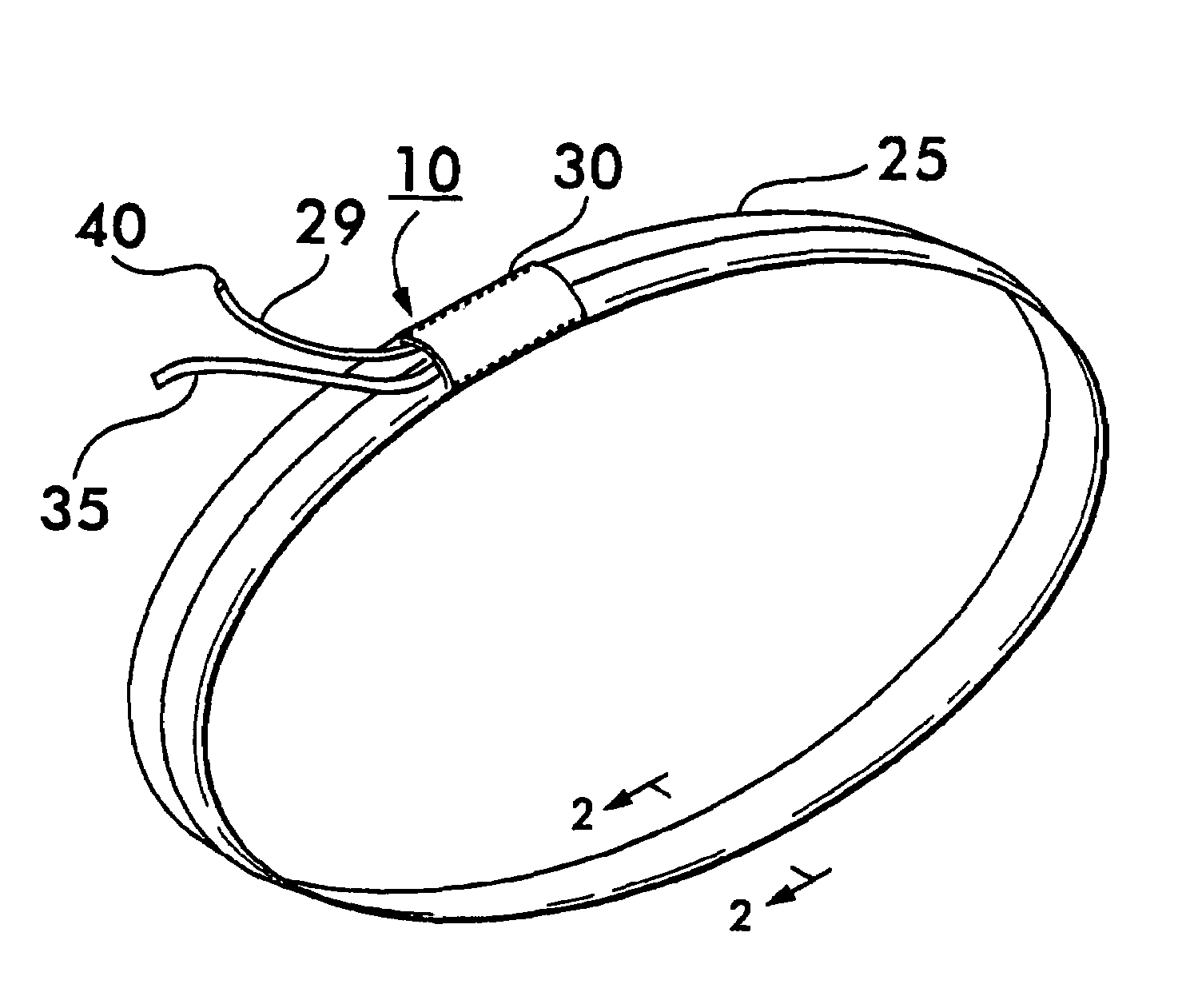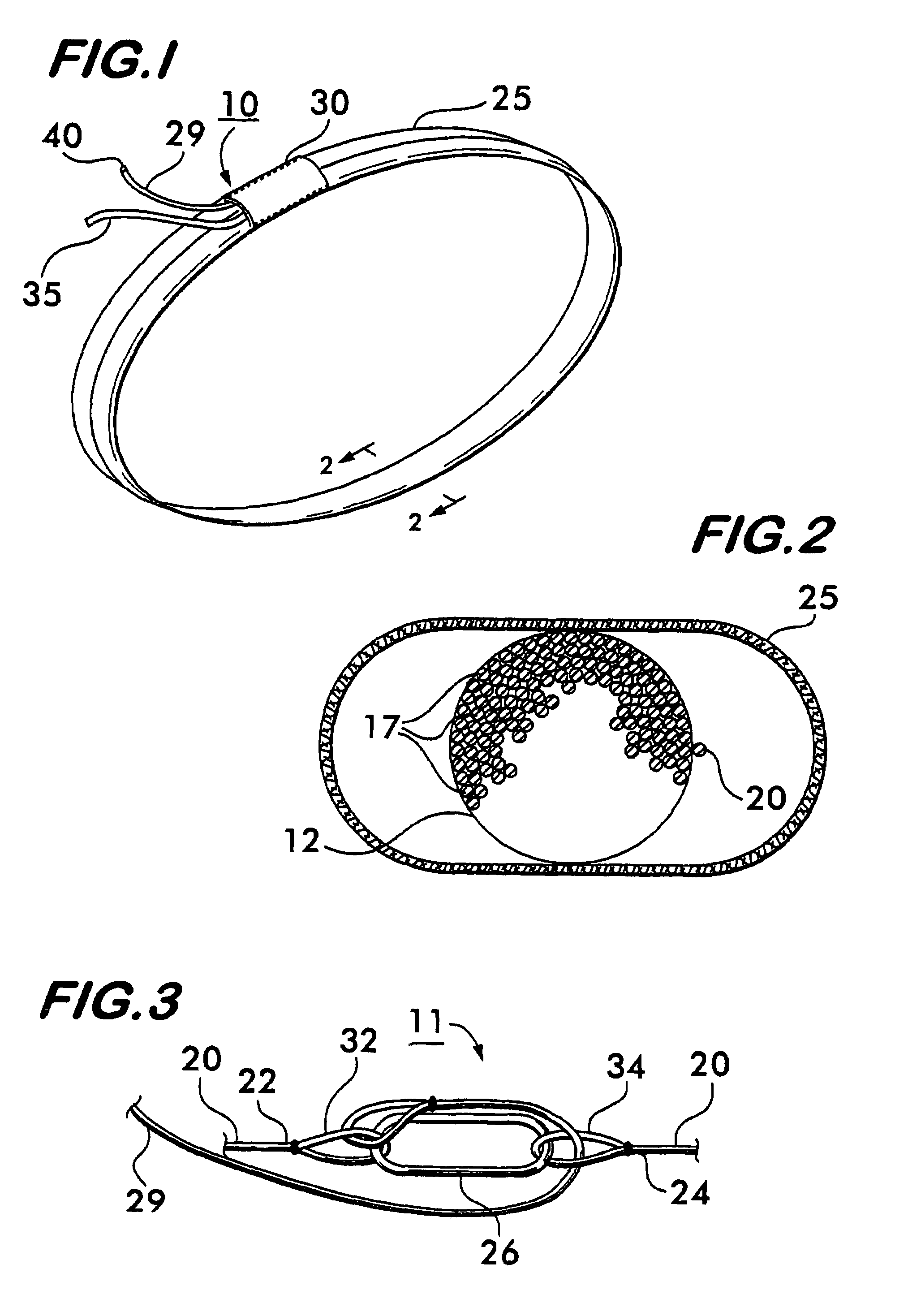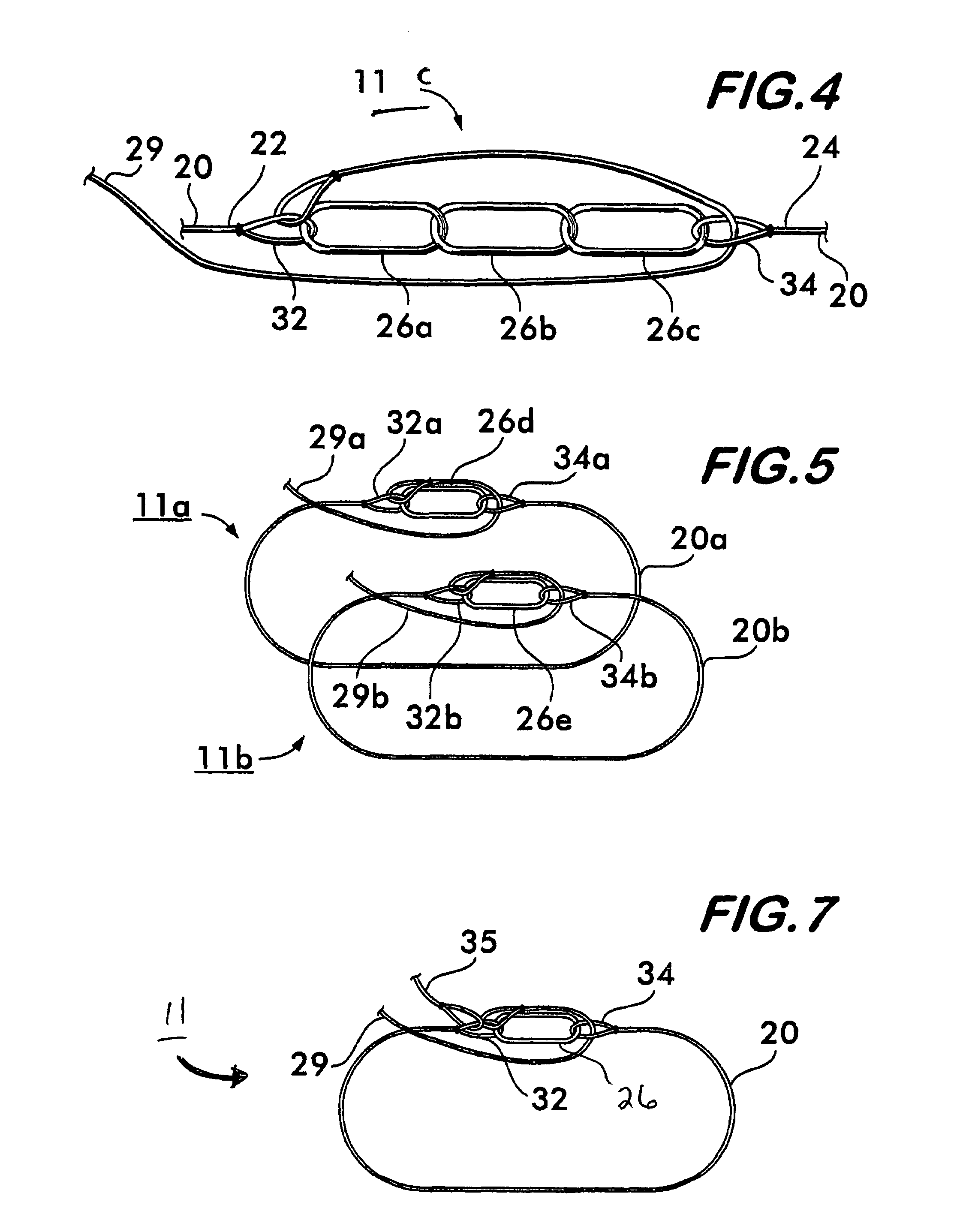However, compared to non-metal or
synthetic fiber slings, metal slings are relatively stiff and inflexible.
Even with such advances in the art of sling making, the riggers who use these improved synthetic slings still suffer and endure some of the age old problems of sudden failure and loss of a load caused by a sling breaking without warning because it was fatigued (or overly stretched) from being subjected previously to overload conditions.
After a sling has been fatigued, it does not usually provide any physical indication that it was damaged—even to the trained eye.
Slings are attached to a testing
machine that applies a steady but increasing force on the sling until it is unable to withstand the stress of the force being applied to it and the sling ultimately breaks.
Unfortunately, even conscientious operators / riggers who do not take unsafe shortcuts and who operate in a safe responsible manner sometimes are surprised by a sling breaking in use even when they believed it was being used within the load limits of its rated capacity.
For example, when industrial slings are in continuous heavy use over three shifts around the
clock, the operators on a later shift may not be aware that someone on an earlier shift had subjected the sling to a substantial overload which may have caused serious damage to the lifting core strands of the sling.
When a
synthetic fiber sling is overloaded beyond its tensile strength or weight-
lifting capacity at maximum stretch, it is considered to be fatigued and may never return to its normal strength and
load bearing capacity.
When subjected to an overload condition above its rated capacity, a roundsling can be permanently damaged / deformed if the load stretches the fibers of the
load bearing core material beyond their yield point.
An over-loaded sling may be susceptible to fracture at a
stress point.
This condition is similar to the stretching of a
rubber band beyond its point of normal elasticity so that when the load or tension is removed or relieved, the
rubber band will never regain its normal configuration and its strand dimensions may be permanently stretched which will cause it to fail under a load which is less than its tensile strength load.
As stated previously, it is nearly impossible to determine, upon a cursory
visual inspection, that a sling has been damaged because of the
large size of such slings (on the order of 6 feet or more) and because the load-bearing core is hidden inside the outer cover.
To date, there has been no precise method or apparatus available to an operator or rigger to determine if a sling with a protective cover was subjected to an overload or damage-causing condition.
If a roundsling has been fatigued or structurally changed, the sling may no longer lift a load according to its maximum rated
load capacity and, most importantly, becomes a serious
threat to the operators and riggers using the sling.
Although the outer covers of synthetic slings are designed to reduce damage, the core fibers are still susceptible to damage from abrasion,
cutting by sharp edges, or degradation from
exposure to heat, cold,
ultraviolet rays, corrosive chemicals or gaseous materials, or other environmental pollutants.
In certain instances, the core
yarn of a synthetic sling could weaken, melt or disintegrate when subjected to elevated temperatures, or to
prolonged exposure to either
ultraviolet light or chemicals.
Still another safety concern flows from abuse by the user when the core
yarn is damaged from
abrasive wear when the slings are not rotated and the same wear points are permitted to stay in contact for extended periods of time with a device used for lifting (such as hooks on a crane), or on the edges of the load itself.
Riggers in the field are concerned that the inner lifting core
yarn of their roundslings may be damaged on the inside without a means for them to detect such defects through the sling cover.
Even if the cover is removed it may be impossible to tell if the lifting core has been damaged to the point where it cannot lift its rated load.
Since there is no reasonable non-
destructive testing techniques for
synthetic fiber slings, a synthetic sling that is only suspected of being damaged must be removed from service for safety reasons.
The
structural integrity of the roundsling lifting core material is difficult to determine when it is hidden inside a protective cover of opaque material which renders the lifting core yarn inaccessible for inspection.
A stretched or fatigued roundsling could experience a sudden
catastrophic failure without warning to the rigger, which may result in the loss of lives and property.
However, there usually was no consistency on how the tell-tails would react when triggered, even when the slings were manufactured under identical conditions.
A drawback of prior art failure indicators based on an indicator strand is that there is no predictable way of determining when the failure indicator will be triggered.
Unfortunately, there was no way of ensuring that the tell-tails would consistently withdraw within the cover at about 24,000 pounds.
If the fibers of lifting core yarn break or fracture, then the
fiber optic cable will also be damaged which will prevent the transmission of light from one end to the other end of the emerging fiber optic cable.
If the light fails to pass from one end of the
signal fiber optic cable to the other end, then the rigger is warned that the lifting core strands may be damaged, and to remove the protective cover from the roundsling for further inspection.
Although the apparatus disclosed in U.S. Pat. No. 5,651,572 is currently the leading product for determining whether the lifting core yarns of a synthetic sling have snapped or been damaged, in the stages where the sling has been subjected to an overload condition, the fiber optic
signal strand still does not have the identical stretching properties of the load-bearing core yarns.
Alternatively, the fiber optic cable, being more brittle than the synthetic core material, may be damaged by normal handling (and dropping) of the sling, or at a force less than the rated capacity of the sling.
In such cases, the
light transmission through the fiber optic cable may be disrupted causing the fiber optic cable to indicate an overload condition when, in fact, no overload condition was reached.
Finally, under other excessive or damage-causing situations (e.g., excessive heat, acidic or
chemical exposure, and
ultraviolet exposure) it can be expected that the fiber optic cable will be affected differently than the synthetic strands of the lifting core.
 Login to View More
Login to View More  Login to View More
Login to View More 


